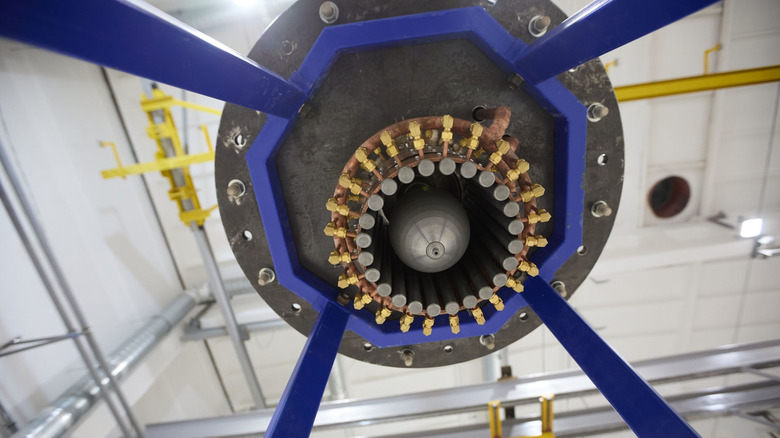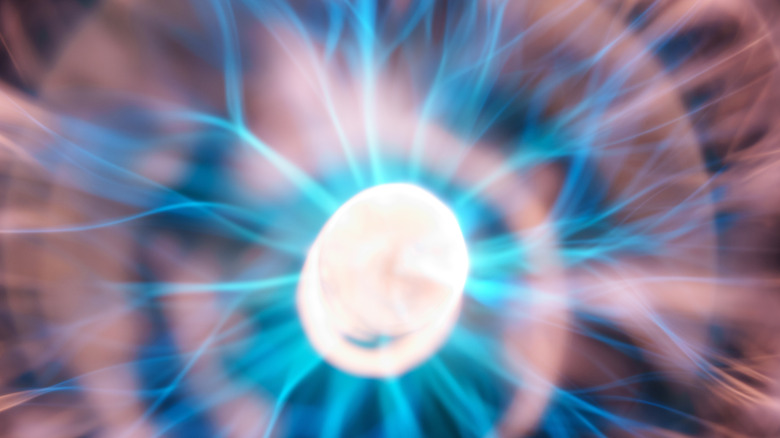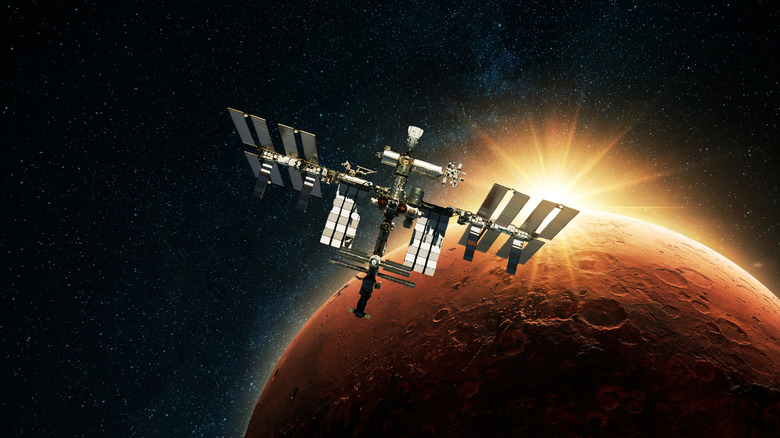With This Plasma Engine Prototype, The Possibility Of Traveling To Mars In 30 Days Gets Closer
A laboratory in Troitsk, Russia, may have just nudged humanity closer to interplanetary commuting. Scientists at Rosatom, the country's state nuclear corporation, have revealed a working prototype of a plasma propulsion engine they claim could propel a spacecraft to Mars in roughly 30 to 60 days.
The concept replaces fiery combustion with electromagnetically accelerated plasma, which is essentially a stream of ionized hydrogen atoms catapulted from the engine at breathtaking speed. At just 6 newtons, the design has a modest thrust figure when compared to a traditional rocket engine, but it's around 60x stronger than other ion thrusters like NASA's Dawn. With its steady push applied for weeks on end, it could achieve staggering final velocities.
Lab tests showed that the charged particles achieved staggering speeds of around 100 kilometers per second (62 miles per second). To put it into perspective, that's roughly 25 times faster than traditional chemical rockets. The efficiency of the system is the impressive part, not the high particle speeds. Instead of burning through tons of propellant in minutes, the plasma drive acts as more of a sustained energy release that continuously converts cleaner nuclear-powered electricity into forward motion.
How electromagnetic propulsion works
Rather than igniting fuel, Rosatom's design uses two charged electrodes to create a magnetic field. As hydrogen gas passes between them, its electrons are stripped away, and plasma is created. This plasma is then accelerated out the back of the engine as it passes through the field, generating the necessary thrust. While it may not have the thrust to compete with some of the most powerful rocket engines, each pulse produces what is a relatively tiny push, but the system runs almost indefinitely, building momentum in the vacuum of space.
Rosatom's prototype runs at about 300 kilowatts, a figure that demands a nuclear power source rather than solar arrays. Inside a new 14-meter-long vacuum chamber, engineers are testing how magnetic confinement handles prolonged operation and heat management. Because the plasma doesn't have to be heated to extreme temperatures, the engine's internal components avoid the wear and tear typical of combustion-based thrusters.
That efficiency really shows up in the numbers. A specific impulse, a measure of how effectively it uses fuel, achieved figures of near 10,000 seconds, eclipsing the 4,000 to 5,000 seconds that the current best electric thrusters put out. If engineers can safely link it with a small nuclear power source, future spacecraft could travel around the inner solar system without carrying huge fuel reserves or waiting for narrow launch windows to open.
Towards a safer, faster route to mars
In space travel, shorter travel times are mission-defining and possibly even lifesaving. A trip that lasts weeks instead of a year dramatically cuts an astronaut's exposure to cosmic radiation and microgravity effects. Rosatom's plasma engine, if it performs as advertised, could make round-trip Mars missions feasible with less shielding and fewer health risks.
The technology forms part of what is now a broader push for advanced propulsion. NASA is pursuing nuclear-powered rockets, private firms are experimenting with VASIMR plasma drives, and European researchers are testing water-based propulsion for small satellites. Where Rosatom's contribution stands out is the potential scale of it. The plasma propulsion device could be used as a high-power electric engine for deep-space cargo missions or crew transports by 2030.
Skepticism around the plasma engine will remain until there's tangible evidence of its claimed capabilities. But it's an exciting prospect nonetheless. Rostatom's ingenious combination of plasma physics and nuclear energy could finally unlock the kind of sustained and efficient power needed to make Mars a destination measured in weeks instead of years.


